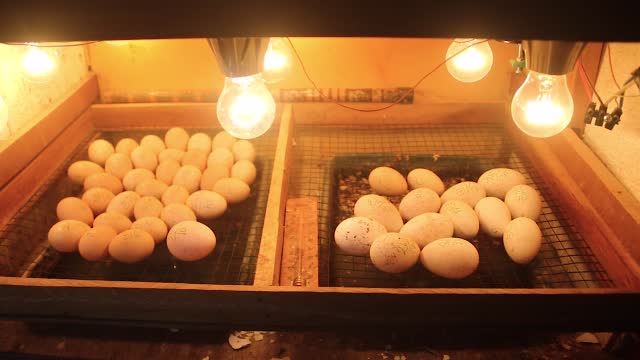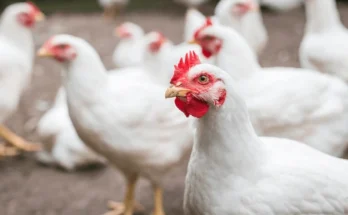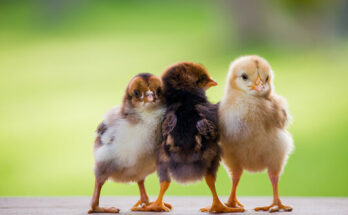Understanding the Fertilization Process of Chicken Eggs
When it comes to understanding the process of how chicken eggs get fertilized, it’s essential to comprehend the role of roosters in the reproductive cycle. Roosters are responsible for fertilizing the eggs laid by hens. This occurs through a process where the rooster mates with the hen, transferring sperm to fertilize the egg before it is laid. Understanding the intricacies of this natural process can provide valuable insight into the life cycle of chickens and the production of fertilized eggs.
We also have a complete guide to a chicken’s life span here which we recommend also reading.
The Reproductive System of Chickens
The Ovary and Egg Production
A chicken’s reproductive system is intricate and fascinating. The reproductive process begins within the hen’s body, specifically in the ovary, where the eggs are formed. The hen is born with a finite number of ova, which develop into the familiar eggs we see. Once an ovum reaches maturity, it is released from the ovary and moves into the oviduct, ready for potential fertilization. The oviduct is where the egg white and shell develop around the yolk, ultimately resulting in a complete egg. This amazing process occurs continuously in a healthy hen, allowing for consistent egg production.
The Role of the Sperm
In order for an egg to become fertilized, the presence of sperm is necessary. Hens are inseminated by roosters during mating. Once the sperm enters the hen’s reproductive system, it travels through the oviduct, where it can fertilize an awaiting ovum. If fertilization occurs, the egg will continue its journey through the oviduct, where it will develop into a fertilized embryo. The fertilized egg will then proceed to the uterus, where the shell will form around it. If the egg is not fertilized, it will continue through the reproductive system and be laid as a regular, unfertilized egg. This intricate process is crucial for the continuation of the chicken species, and is a fundamental aspect of egg production in poultry farming.
The Fertilization Process
How It Happens (How chicken eggs get fertilized naturally)
How chicken eggs get fertilized is when a rooster mates with a hen, the sperm is stored in the hen’s oviduct for fertilization.. The oviduct is a crucial part of the hen’s reproductive system, where the yolk and albumen are added to the egg. The sperm can remain viable in the oviduct for up to several weeks, ready to fertilize an egg when it is released.
Fertilization of the Egg
Fertilization occurs when the sperm from the rooster meets the egg in the oviduct. The sperm must penetrate the egg’s protective layer, the vitelline membrane, to merge with the egg’s nucleus and initiate the development of an embryo. Once fertilized, the egg continues its journey through the oviduct, where it undergoes the formation of the egg white, shell membranes, and shell before being laid by the hen.
Understanding the intricate fertilization process sheds light on the remarkable journey of a chicken egg from fertilization to the moment it reaches your breakfast table.
Incubation and Embryonic Development
Egg Collection
When it comes to fertilized eggs, the process starts with collecting the eggs from the nesting boxes. It’s important to handle the eggs gently and avoid any sudden movements that could damage them. Inspecting the eggs for cracks or irregularities before incubation is crucial. A cracked egg can lead to contamination and compromise the success of the incubation process.
Incubation Period
Once the eggs have been collected, the next step is to place them in an incubator that simulates the ideal conditions for embryonic development. The incubation period for chicken eggs typically lasts for 21 days, during which the temperature, humidity, and ventilation within the incubator must be carefully controlled to ensure the best possible environment for the embryos to develop.
Embryo Development
During the incubation period, the embryos progress through various stages of development. Within the first few days, the blood vessels of the embryo become visible, and the embryo starts to take form. As the days pass, the embryo continues to develop, forming recognizable features such as the beak, wings, and legs. The last few days of incubation are crucial for the final stages of development, as the chick preps for hatching by positioning itself for pecking through the shell.
Conclusion
Understanding the fertilization process of chicken eggs is essential for those involved in poultry production. The process begins with mating, where roosters transfer sperm to the hens for fertilization to occur. Once the sperm reaches the oviduct, the egg forms and fertilization takes place. The fertilized egg then moves through the oviduct, where it develops and receives its protective layers before being laid. This crucial knowledge empowers poultry farmers to optimize their breeding programs and ensure the production of healthy, viable eggs. Healthy chickens above all has the biggest impact on how chicken eggs get fertilized in regards to breeding quality of the offspring. We recommend you read this article to maintaining your chicken’s health.



